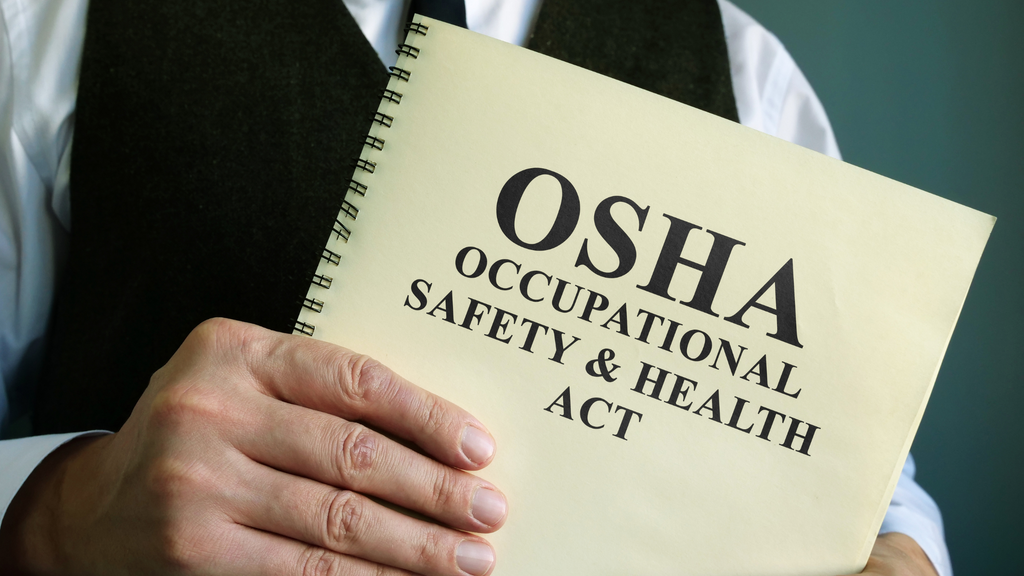Is Your Business OSHA Compliant?
Ensuring compliance with the Occupational Safety and Health Administration (OSHA) regulations is essential for any business, particularly in industries where safety is paramount. OSHA compliance not only safeguards your employees but also protects your business from potential fines and legal issues. One of the most effective ways to ensure compliance is through the consistent use of log books.
Understanding OSHA Compliance
OSHA sets and enforces standards to ensure safe and healthy working conditions for employees across various industries. Compliance involves adhering to these standards, which cover everything from equipment maintenance to employee training. Regularly reviewing OSHA regulations and ensuring alignment with operational practices is crucial for any business.

Key Areas to Focus On
Employee Training
Comprehensive training programs are the cornerstone of OSHA compliance. Employees should be thoroughly trained on the proper use of equipment, emergency procedures, and safety protocols relevant to their roles. Regular refresher courses can help keep safety top of mind. According to the National Safety Council (NSC), improper training is a significant factor in workplace injuries, emphasizing the need for ongoing education (Safety+Health).

Proper Documentation
Accurate record-keeping is essential. OSHA requires businesses to maintain detailed records of workplace injuries, illnesses, and safety inspections. Utilizing specialized logbooks can simplify this process, ensuring that all necessary information is documented and easily accessible. Effective documentation practices can significantly reduce the risk of non-compliance and enhance overall safety management.
Equipment Maintenance
Regular maintenance of tools and machinery is critical to prevent accidents and ensure compliance. Implementing a system for routine checks and servicing helps identify potential issues before they become hazards. Keeping a detailed maintenance log is a best practice for tracking this process.
Workplace Inspections
Conducting regular workplace inspections is key to identifying and mitigating risks. These inspections should be documented thoroughly, with any hazards noted and addressed promptly. Using dedicated logbooks for inspections can help streamline this process and ensure nothing is overlooked. The NSC highlights that many workplace incidents could be prevented through diligent inspections and proactive measures.
Emergency Preparedness
Being prepared for emergencies is another critical aspect of OSHA compliance. This includes having clear evacuation plans, accessible first-aid kits, and trained personnel ready to respond to emergencies. Regular drills and updates to emergency procedures ensure ongoing readiness.
The Role of Logbooks in OSHA Compliance
Log books play an essential role in maintaining OSHA compliance. They provide a structured way to record critical information, from daily safety checks to equipment maintenance schedules. By using specialized logbooks tailored to your industry, you can ensure that all required documentation is accurate and up-to-date, making compliance easier to manage.

How Log Books Unlimited Can Help
Centralized Record Keeping
Our log books offer a dedicated space to record all safety inspections, maintenance activities, and safety training sessions. This not only streamlines your documentation process but also makes it easier to retrieve records during audits.
Customized Solutions
We understand that different industries have unique safety requirements. That’s why our log books can be customized to fit your specific needs, whether you’re in construction, manufacturing, or any other sector that necessitates adherence to OSHA regulations.
Encouraging a Safety Culture
Regularly using log books encourages employees to prioritize safety. When they see that their daily inspections and safety checks are being documented, it fosters accountability and a proactive approach to workplace safety.
Easy Compliance Tracking
With our log books, you can easily track compliance with OSHA regulations. This helps identify any lapses in safety protocols and allows for immediate corrective actions, reducing the risk of accidents and violations.
Log Books That Ensure OSHA Compliance
Log books play an essential role in maintaining OSHA compliance. They provide a structured way to record critical information, from daily safety checks to equipment maintenance schedules. Here are some specialized logbooks that can enhance your compliance efforts:
Excavator - Replacement Log #CHKEX
The Excavator Replacement Log Book includes 75 carbonless copy sheets for daily inspections. It simplifies the process for supervisors to confirm that OSHA-required safety inspections have been completed, promoting a culture of safety and accountability.

Telehandler/Lull Forklift - Replacement Log #CHKTL
The Telehandler/Lull Forklift Replacement Log Book also features 75 carbonless copy sheets, ensuring that operators complete full inspections prior to operation. This log helps organizations strengthen their safety culture, lower insurance risks, and demonstrate OSHA compliance.

Front End Loader - Replacement Log #CHKFEL
The Front End Loader Replacement Log Book provides a complete checklist system that holds operators accountable for conducting thorough inspections. With 75 carbonless copy sheets, it aids in fostering a consistent inspection process and ensuring compliance with safety regulations.

Backhoe - Replacement Log #CHKBH
The Backhoe Replacement Log Book offers a structured way to document daily inspections, ensuring that all safety checks are performed before operation. This log book helps organizations manage inspections effectively, thereby boosting productivity and adherence to safety standards.

Consequences of Non-Compliance
Failing to comply with OSHA regulations can lead to significant penalties. OSHA's enforcement policy includes fines that can reach up to $15,625 per violation, with serious violations potentially incurring fines of up to $156,259 (OSHA.gov) Additionally, repeated or willful violations may result in even steeper penalties. Beyond financial repercussions, non-compliance can damage a company's reputation and lead to increased scrutiny from regulatory agencies. Learn more about penalties here.

Conclusion
Maintaining OSHA compliance is an ongoing process that requires attention to detail across all areas of your business. By focusing on employee training, proper documentation, equipment maintenance, workplace inspections, and emergency preparedness, you can create a safer work environment and avoid costly penalties. At Log Books Unlimited, we offer a range of specialized log books designed to help you stay compliant and keep your operations running smoothly.
Explore our selection today to find the right tools for your compliance needs. Together, let’s work towards a safer tomorrow!



